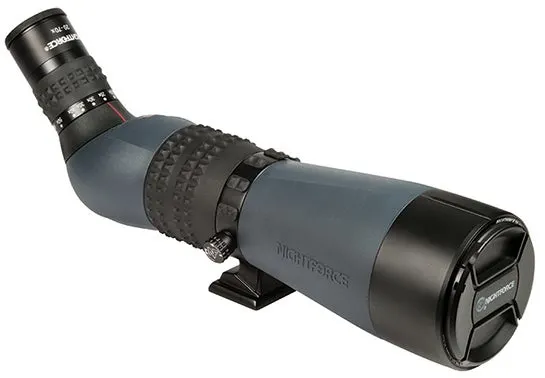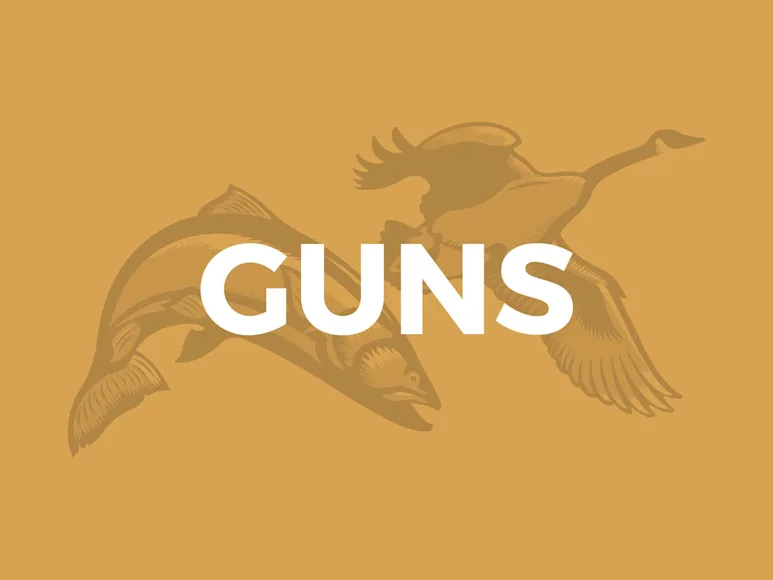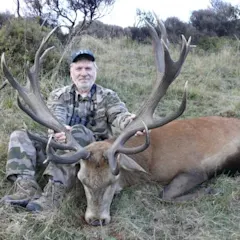_We may earn revenue from the products available on this page and participate in affiliate programs. Learn more ›
_

I’ve been testing optical gear on a more or less regular basis since 1985, and one of the things I’ve observed is that the difference in image quality between one instrument and another is usually pretty subtle, and sometimes there is none. Not so here. The Nightforce TS-82 XTreme HIDEF makes other spotting scopes look like someone poured vegetable soup on the lenses. Its optics smite you as David smote Goliath.
In my post on the Nightforce ATACR riflescope, I wrote that the company specializes in sights for the target range and for tactical shooters; long range is the company’s bailiwick. So it is with the TRS-82; it’s for the folks who operate from Way Out There.
I put it to two tests. The first was spotting bullet holes in a Birchwood-Casey Shoot-N-C target, which uses hideous contrasting fluorescent colors to highlight the holes, and which is invaluable at long distances unless you feel like trotting down to the backstop every shot or two. I shot at 600 yards with a 6.5/284 Montana Rifles tactical rifle, and was aided in my enterprise by Rocky Prout, a High Master-ranked F-Class competitor who lent me his own high-grade scope and his eyes.
I fired five shots, and used my own scope (a very good one with a $1,500 price tag on it that has served me very well) on 25X, which was as high as I could go without the mirage making life impossible. I could see blobs of different colors so I could tell that something was going on, but not exactly what. Next we tried Rocky’s scope, which is one of the top makes but is ten years old, meaning it’s about two generations obsolete. Through it, at the same magnification, we could clearly see the bullet holes. With the TS-82, we could see the bullet holes, but the image was far brighter. It was as though someone had turned on a light somewhere. It made my poor scope, good as it is, seem totally inadequate.
The other test was on a target that employs green scoring rings no thicker than a pencil line to form a bull that is only 5 inches across and whose center is smaller than a dime. The target itself is medium brown, and unless your scope has excellent definition and color rendition, the lines are impossible to see from even 100 yards.
I went to the range at twilight and found that with the TS-82 I could easily see the rings at 300 yards with any magnification from 40X to 70X, including after sunset when almost all the light was gone from the sky.

(Unlike just about all of the spotters I’ve looked through, the TS-82 retains its sharpness all the way up through its top magnification. With lesser instruments, when you hit maximum power, your image turns to highly magnified blobs. Achieving this bottom-to-top sharpness, according to the Nightforce folks, is a TASK.)
Like all Nightforce equipment, the TS-82 has excellent ergonomics. There are no bells or whistles; everything is clearly marked and easy to find and operate. While it’s not a particularly big scope, at 67 ounces with eyepiece it’s not light.
The TS-82 is available either angled or straight and can be ordered with a 20X-70X eyepiece or a wide-angle 30X-60X. It’s rubber armored, waterproof and shockproof. The MSRP for the angled or straight-bodied scope with the 20X-70X eyepiece is $2600; street price $2,522. Either eyepiece, sold separately, is $425. This puts the TS-82 in about the middle of the superscope price range. As I pointed out in my previous post on the Nightforce ATACR, you’re justified in spending a lot of money on a scope if you need it and if it’s capable of doing things that other scopes can’t. If you’re looking for something that can clearly show you a .26-caliber bullet hole at a third of a mile, I don’t see how you can do better than the TS-82.


